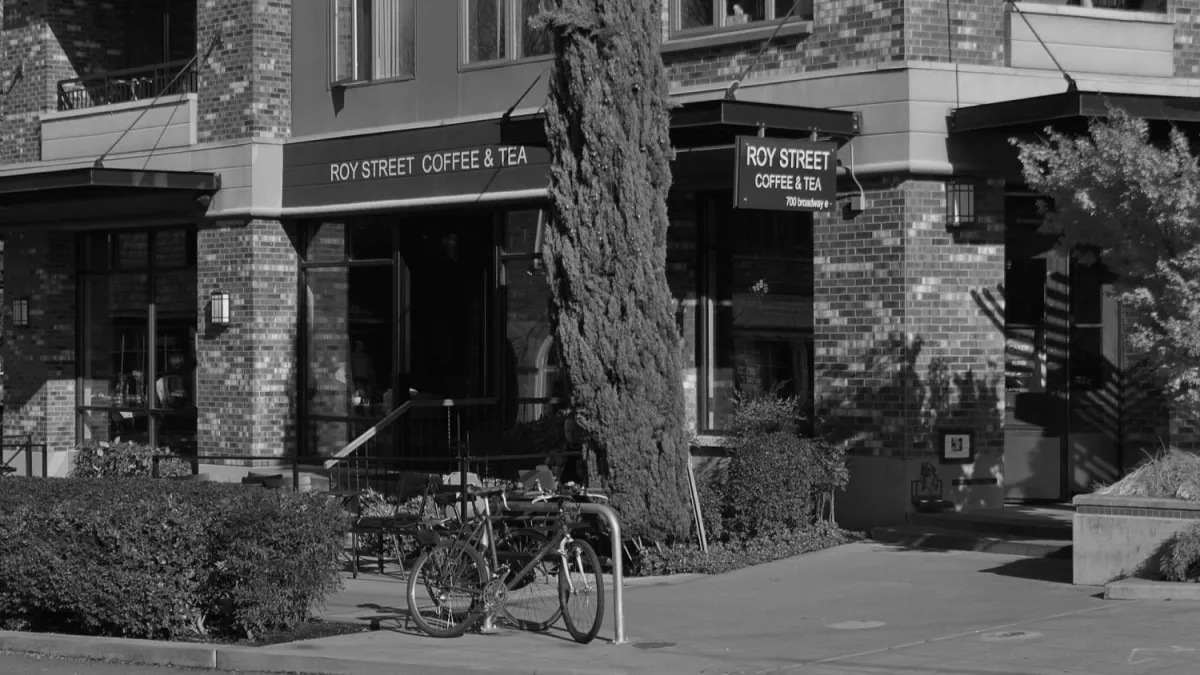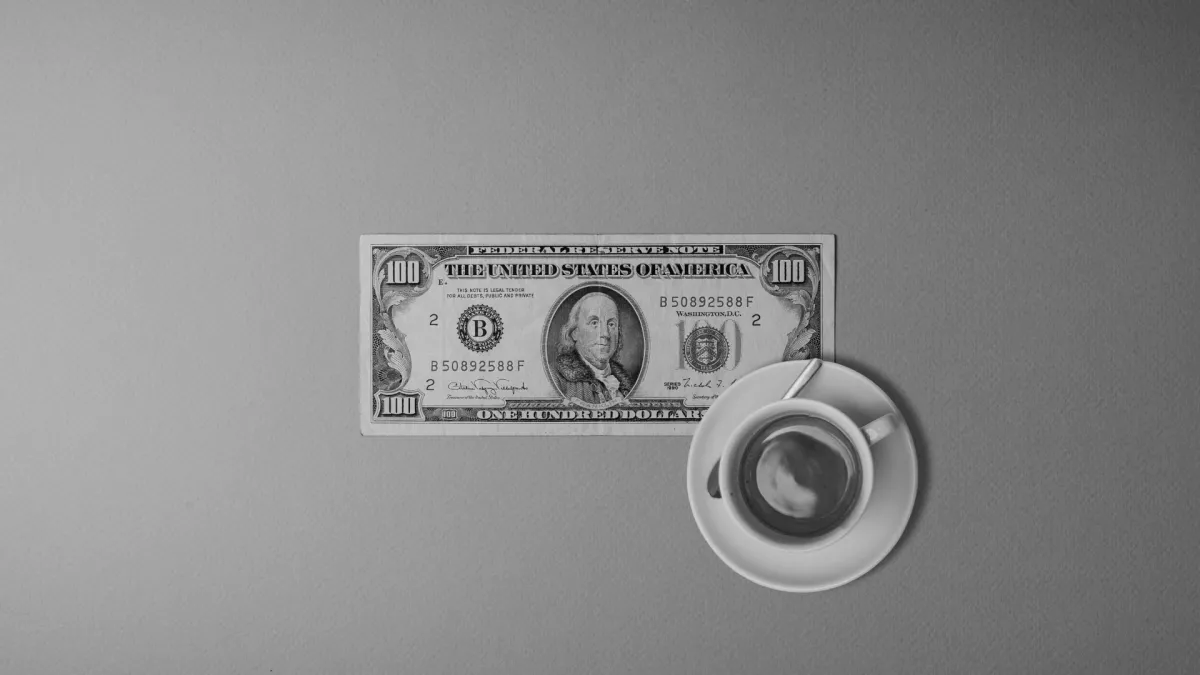Embrace, Extend, Extinguish … Espresso?
How a Microsoft business strategy from the ’90s explains Starbucks’ new cortado—and the general flattening of modern coffee culture.

The language of coffee is often confusing and vague. Meanings can be fluid, and the lexicon changes depending on location, history, and culture. Descriptors like “smooth” and “bold”, “gourmet” and “artisanal” all mean different things to different people—and in the latter cases, often lose all meaning from overuse.
This is also true of espresso drinks: You might assume that lattes, flat whites, and cortados are all clearly defined and understood, but that is far from the case. Nobody can agree which country invented the flat white, let alone what size it should be.
Over the past two decades, as specialty coffee has grown and been embraced by a wide range of consumers, corporations have taken note. Big companies have increasingly co-opted the trappings of specialty coffee as well as common coffee language, weakening shared understandings and twisting definitions to meet their own needs.
The most famous example of this phenomenon in coffee is the Starbucks macchiato, which is closer to a milkshake than the traditional espresso drink served with just a dash of foam. Since Starbucks appropriated the name and supersized the beverage, it has caused no end of issues for other companies—anyone who has ever worked as a barista at an independent cafe will shudder at memories of having to clarify which macchiato a customer really wanted.
The latest beverage to be embraced by Starbucks—or bastardised, depending on how generous you’re feeling—is the cortado, which the multinational recently added to its “core espresso beverage lineup” in similarly oversized form.
From the coffee chains’ perspectives, drink names like these are merely marketing terms, used to lend them a gloss of third-wave legitimacy. But these linguistic appropriations are just another example of the slow, inexorable flattening of coffee culture—one that benefits corporations at the expense of independents.
‘Widely Misunderstood and Unfairly Vilified’
In the 1990s, Microsoft was accused of employing a controversial business strategy now known as “embrace, extend, and extinguish”. As the company grew, its critics alleged, it took popular open-source software (such as the Java platform), expanded them with proprietary elements, and then used its size and hegemony to marginalise competitors. (More recently, similar accusations have been made against Google and the way it uses the dominance of its Chrome browser to disrupt competition.)
In 1998, the United States Department of Justice brought a landmark antitrust case against Microsoft. As the D.O.J. wrote, “Microsoft planned to ‘embrace’ existing Internet standards, ‘extend’ them in incompatible ways, and thereby ‘extinguish’ competitors”.
There is some debate over whether this strategy actually included the “extinguish” part—the original memo used the term “innovate”, and technology writer Paul Thurrott has described it as “widely misunderstood and unfairly vilified as a strategy”. But whichever form Microsoft’s strategy took, it’s possible to see echoes of it in the way corporate coffee companies have embraced the trappings of specialty coffee.
Take the flat white: It has been a staple of most independent coffee shop menus for more than a decade now. The exact proportions of the drink—which originated in either Australia or New Zealand, per ongoing debate—can vary slightly, and nobody quite agrees on its exact makeup. In 2015, Alex Bernson conducted a survey of Antipodean readers for Sprudge, and the consensus was that it should be around 160ml (5.5oz).
But when Starbucks launched its version of the flat white, Bernson noted, the default size was 12oz. (You can now order it in an 8oz size, although that’s still much larger than what most coffee shops offer.) Costa’s flat white comes in at a similar size, now 227ml (about 7.7oz).
Starbucks isn’t alone in its hijacking of these terms, but it has generally taken the lead in doing so (see: the macchiato). The coffee giant’s latest attempt is the cortado, which it released as part of its winter menu at the beginning of January. According to Nation’s Restaurant News, the cortado is the first new drink to make it onto the company’s “core espresso beverage lineup” since the flat white in 2015.
A traditional cortado is smaller than a flat white, usually around 4oz (118ml). But Starbucks’ version? A whopping 8oz. Creating yet more confusion for customers and baristas is clearly not a concern for the company—in fact, it might be beneficial. In future, Starbucks’ customers, grown used to the larger-sized cortado, will likely expect a similar drink when they visit specialty coffee shops. When they don’t receive it, they’ll leave disappointed—and more likely to stick to chain cafes in future.
The Great Flattening
These stolen drink names are, at least in part, an attempt to ape the allure of specialty coffee, and it’s yet another example of the ongoing homogenisation of coffee culture. You can see this trend everywhere: Chains now all serve cold brew in some format; China’s Luckin Coffee is selling Gesha coffee; Starbucks has its own barista competition and flagship Reserve Roastery locations with siphon brewers. The flattening goes both ways: Smaller coffee shops are franchising, opening drive-thrus, and offering blended drinks in an attempt to attract Starbucks’ customers.
Then there are the aesthetics. Due to what the writer Kyle Chayka calls “The tyranny of the algorithm”, many coffee shops across the world now look the same, all neutral colours and sparse, minimalist decor. According to Chayka, increased globalisation and algorithm-driven social media have pushed customers and coffee professionals alike to consume similar coffee content, and companies have been happy to respond by delivering familiar experiences.
“To court the large demographic of customers moulded by the internet, more cafes adopted the aesthetics that already dominated on the platforms”, Chayka writes. “Adapting to the norm wasn’t just following trends but making a business decision, one that the consumers rewarded”.
Take % Arabica as an example. The Japanese chain has expanded worldwide, bringing its ultra-minimalist and highly Instagrammable design with it. Blank Street Coffee, meanwhile, might be the perfect distillation of this idea. A venture-capital-funded chain that tries to imitate sleek, community-focused coffee shops, Blank Street has spread across the United States and to the United Kingdom. Julia Moskin in the New York Times described the company as an “attempt to create cutting-edge, streamlined shops with an independent vibe”.
Another example might be Starbucks’ unbranded “stealth” stores, which the company launched in the 2000s. As I wrote previously, these locations were specifically designed to mimic local, independent cafes. Whether or not they were explicitly created to trick unsuspecting customers is up for debate.

Both Starbucks and Blank Street have faced accusations that they purposefully targeted local coffee shops. “[Blank Street] opened right across the street from Everyman [Espresso in Park Slope]”, one customer told Moskin. “That’s not a coincidence”.
The “extinguish” part of Microsoft’s strategy might not have been explicit, but it’s not news that big companies are always looking to extend their dominance. If a local cafe shuts down because a chain opened next door? That’s just business.
This great flattening is taking place on a macro level as well, across the coffee industry and worldwide. As third-wave trailblazers are increasingly acquired by multinationals, as smaller chains expand abroad, and as global social media platforms drive new trends, the homogenisation will doubtless continue. Corrupted cortados will likely follow oversized flat whites onto every chain menu, and specialty baristas will be left to explain the difference to confused customers.
But there is still hope: A backlash to this globalised, sanitised, flattened coffee culture is brewing. Local coffee shops are embracing their community focus like never before, while worker-owned cooperatives are spreading across the U.S. Unique interior design, a focus on fun and connection, and a keen sense of place are all becoming more prominent among specialty coffee businesses. This bodes well for the future of coffee culture.
The Heart and Soul
During Microsoft’s antitrust case, Bill Gates wrote a defense of his company’s actions. The tech giant, he explained, was only giving customers what they wanted. “Everything Microsoft does—and everything our competitors do in the marketplace—is driven by the goal of giving consumers innovative tools and products that will improve their lives. That is the only way we can remain competitive”.
You can hear echoes of this sentiment in Starbucks’ marketing of its new cortado. “Espresso is the heart and soul of Starbucks”, Ricky Gonzalez, part of the company’s beverage development team, said in a press release. “Our goal was to create a new way for customers to experience espresso from us”.
In the end, Starbucks selling cortados—or flat whites, or macchiatos—isn’t going to extinguish the competition. There are still hundreds of thousands of places to get a cortado, not all of which look identical. But that doesn’t mean the chain’s strategy won’t still create wider ripple effects.
Is this all an explicit plot to embrace, extend, and extinguish specialty coffee in order to corporatise the industry? Of course not. But big corporations benefit from the blurring of the lines between specialty and mainstream coffee. Even if a customer is curious about that third-wave cafe down the street, if you can offer them a facsimile of the experience in a recognisable and comfortable environment, then perhaps they won’t stray.

Read more on this topic








